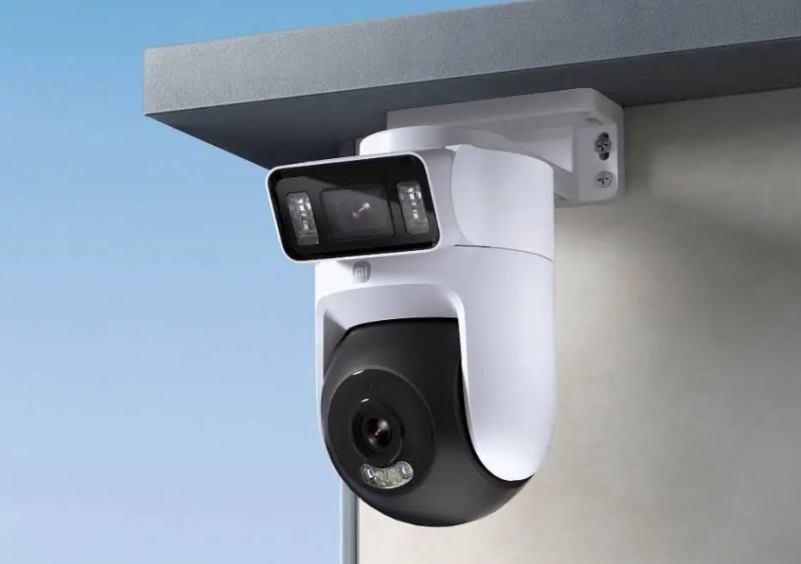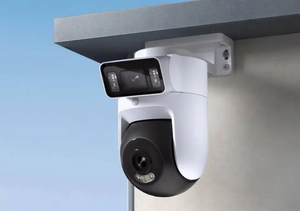
Detailed Explanation of Camera Inspection Methods and Standards - Inspection Services for Warehousing and Factory Audits
Cameras, as crucial video input devices, play a vital role in various fields such as video conferences, remote healthcare, real-time monitoring, and personal communication. The quality inspection of cameras is a systematic project, covering the entire process from the warehousing of components to the delivery of finished products. This article will deeply analyze the factory inspection and quality inspection procedures, key quality control points, and testing standards of cameras, providing comprehensive reference guidelines for purchasers, quality inspectors, and manufacturing enterprises.
I. Basic Knowledge of Cameras and Preparations Before Inspection
(1) Camera Technical Characteristics
A camera is a device that converts optical signals into electrical signals through an image sensor. Its core technologies include image sensors (CCD/CMOS), lens modules, image processing chips, etc. Modern cameras also integrate intelligent functions such as automatic focusing, face recognition, and low-light enhancement.
(2) Preparations before Inspection
Technical document review: Check product specifications, image sensor certification, lens optical test report, and image processing algorithm verification report
Verification standard confirmation: Clearly define the applicable national standards (GB/T related standards) and the customer's specific requirements
Calibration of testing equipment: Ensure that devices such as resolution test cards, color analyzers, illuminance meters, MTF testers, etc. are within the calibration validity period.
Sampling plan determination: Based on the batch size, the sampling quantity and acceptance criteria are determined in accordance with the GB/T 2828-2003 standard.
II. Key Points of Camera Factory Audit
(1) Quality Management System Audit
Check whether the factory has established a complete quality management system (ISO9001 certification)
Review the supplier management procedures, especially the evaluation records of key components such as image sensors, lens modules, and DSP chips.
Review the production process control documents and their implementation status, with a particular focus on key procedures such as COB packaging, lens assembly, and optical debugging.
Evaluate the effectiveness of the control procedures for non-conforming products and the corrective and preventive measures.
(2) Key points of on-site production inspection
Cleanroom management: Check the cleanliness level of the COB packaging and lens assembly workshops (typically requiring over 1,000-level cleanliness)
Incoming Material Inspection Area: Inspection records of key components (image sensors, lenses, IR filters, etc.)
Production line layout: Evaluation of anti-static measures, temperature and humidity control, and optical debugging environment
Key process control: Pay special attention to processes such as sensor packaging, lens focusing, and white balance calibration.
Aging test area: Check whether the aging time and test items meet the process requirements.
III. Inspection Standards and Methods for Camera Products
(1) Appearance Quality Inspection
Appearance inspection conditions:
Lighting conditions: Natural light or 60W - 100W cool white fluorescent lamps (illuminance 600 - 800 Lux)
Observation distance: 300 - 350mm
Observation angle: Horizontal orientation 45° ± 15°
Testing time: 10 seconds ± 5 seconds for each surface
Appearance defect inspection:
Lens surface: No scratches, bubbles, stains or mold spots.
Shell material: No frayed edges, shrinking, deformation or color difference.
Identification printing: Clear, sturdy, and accurately positioned.
(2) Dimension Accuracy Inspection
Overall dimensions: Comply with the design drawings requirements, with tolerances within the allowable range.
Installation dimensions: The positions of the locating holes and the fixing holes meet the assembly requirements in terms of accuracy.
Lens size: The deviation between the optical center and the mechanical center is within the allowable range.
(III) Performance Testing Items
Resolution Test:
Use the ISO12233 resolution test chart
Both the center resolution and the edge resolution meet the specification requirements.
Can clearly distinguish above 300 lines
Color Reproduction Test:
Use the 24-color standard color chart
The color reproduction is accurate, with a color difference of ΔE less than 3.
The white balance is accurate and there is no color bias.
Sensitivity test:
Testing the signal-to-noise ratio under different illuminations
The image is usable even at the lowest illumination level.
The automatic exposure function is working properly.
Geometric distortion test:
Use the grid test card
Bucket-shaped distortion and pillow-shaped distortion are within the allowable range.
(4) Function Testing Items
Auto-Focus Test:
Fast focusing speed and high accuracy
Focus at different distances is all clear.
White balance test:
Accurate color reproduction in different color temperature environments
Automatic white balance reacts quickly.
Data transmission test:
The USB connection is stable and the transmission rate meets the standard.
The plug-and-play function is working properly.
IV. Camera Reliability Testing Standards
(1) Environmental Adaptability Test
High and Low Temperature Test:
High-temperature test: Functioned normally at 55℃ environment.
Low-temperature test: Functions are normal at -10℃ environment.
Temperature cycling test: -10℃ to 55℃ cycling test
Hydrothermal test:
Stored at a temperature of 40℃ and a humidity of 93% for 48 hours.
The function is normal after the test, and there is no fogging on the lens.
(2) Mechanical Reliability Testing
Drop Test:
1 piece with 3 edges and 6 faces falls off. The height is determined according to the product specifications.
The function is normal after the test and there is no damage to the structure.
Vibration test:
Simulation of transportation environment vibration test
After the test, the components were found to be securely fastened and functioning properly.
Life test:
Button lifespan test: 5000 press tests
Interface insertion and removal test: 1000 insertion and removal tests
V. Defect Classification and Acceptance Criteria
(1) Defect Category Definition
Class A: Severe Defects: The product has defects that pose a threat to the personal and property safety of users.
Class B serious defects: Functional defects that affect normal use, performance parameters exceeding specification standards, etc.
Class C secondary defect: A defect that does not affect the product's functionality and for which the customer may be willing to make concessions and accept.
(2) Sampling Inspection Plan
Sampling standard: According to the GB/T 2828-2003 standard, General Inspection Level II
AQL standard:
Class A defect: 0
Class B defect: 0.65
Class C defect: 1.5
Special project sampling: S-1 or a specified quantity, Ac = 0, Re = 1
VI. Packaging, Labeling and Document Requirements
(1) Packaging Inspection
Inner Packaging:
Anti-static packaging is in good condition.
The cushioning material is in place and provides adequate protection.
Outer packaging:
The strength of the carton meets the transportation requirements.
The identification is clear and the information is accurate.
(2) Label Requirements
Product Label: Complete information such as model, specification, and production date must be provided.
Present ticket affixing:
Bag packaging: The original ticket is stuck in the center position on the surface of the bag.
Carton packaging: The tickets for the present event are stuck on the upper right corner of the carton.
(III) Document Requirements
Test report: All test data must be complete and accurate.
Certificate of Conformity: A certificate of conformity is provided for each batch of products.
Instruction manual: Detailed and accurate operation instructions
VII. Special Test for Computer Cameras
(1) Setup of Test Environment
Test distance: The distance between the camera and the test card is 80cm - 100cm.
Testing software: Use professional testing software such as AMCap
Resolution setting: The image size is set to 640×480
(2) Test Standards
Clarity standard: The picture lines are clear, and 300 lines can be clearly seen.
Distortion standard: A slight ripple-like movement is allowed in the middle of the four corner graphics.
Software requirements: Use the new version of the testing software to ensure the accuracy of the tests.
VIII. Conclusion
The quality inspection of cameras is a multi-dimensional systematic project involving optical performance, image quality, structural design, and reliability. Inspection personnel need to have a comprehensive understanding of product standards, inspection methods, and common quality issues in order to effectively control product quality. Manufacturing enterprises should establish a complete quality management system, especially strengthening control in aspects such as optical component quality control, image performance debugging, and environmental adaptability testing, to ensure that the products meet national standards and customer requirements.
分享这个商品

Detailed Explanation of Camera Inspection Methods and Standards - Insp
The camera, as an important video input device, plays a crucial role in video conferences, real-time monitoring, and personal communication, among other fields.
